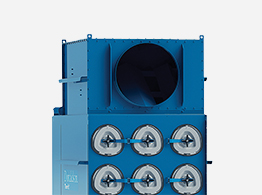Combustible dust is common in many bulk solid manufacturing processes and can have serious consequences. It’s important to review your combustible dust risks and determine a mitigation strategy. In that strategy, consider implementing both prevention and protection options.
Here are three steps to get started.
Step 1: Determine and Understand Your Regulatory Standards
Review the standards that may apply to your industry, specifically those addressing combustible dusts.
The most broadly applicable standards governing combustion hazards are NFPA 652: Standard on the Fundamentals of Combustible Dust, and NFPA 654: Standard for the Prevention of Fire and Dust Explosions from the Manufacturing, Processing, and Handling of Combustible Particulate Solids. NFPA 652 also provides guidance on the process of conducting a DHA. Also be sure to consult the NFPA website to identify any additional standards required for your specific industry.
Although the NFPA has no enforcement authority of its own, OSHA inspectors and many AHJs (authorities having jurisdiction) consider these standards to be the benchmark of safety and cite them when levying fines or reviewing permits. To meet your DHA requirements and minimize fire and explosion risks in your operations, follow these further steps:
Step 2: Assess Your Dust and Process Risks
Next, identify whether the dust in your facility is combustible (can ignite in a pile or layer), explosible (can ignite in a cloud), or neither. You can use historical or published data to help you characterize your dust. But if you are uncertain about how well that data matches your dust and your processes, you need to have a fully representative dust sample tested by a qualified lab.
Next, review whether any of your processes create the possibility of a combustion risk. Do you have processes that generate sparks or processes that mix incompatible materials? Every facility will have slightly different combustible dust risks; therefore, every plant owner is responsible for fully reviewing the operation’s unique risks and constraints.
Step 3. Develop Your Risk Mitigation Plan
Effective mitigation for combustible dust hazards should consist of two focus areas: prevention to minimize the likelihood of a combustion event; and protection to minimize the extent of damage if an event occurs. Both areas are equally important.
Prevention Strategies: Ignition Source Control
The key to preventing a fire is to remove one of the three elements required for combustion: a fuel source (in this case, dust), ignition or heat source, or oxygen. An explosion requires two additional factors: dust dispersion and confinement.
Ignition Control can be the easiest way to reduce fire risk. Common options to prevent ignition sources entering the dust collector include the following:
- Keep the capture hood and the dust collector as far apart as possible. Increased distance may allow a spark to extinguish before it reaches a possible fuel source.
- Install an active spark abatement system to extinguish a spark before it reaches the collector.
- Install a passive spark abatement device, which creates turbulence in the dust collection duct to extinguish sparks before they reach the dust collector.
Protection Strategies: Limit and Extinguish
Fire protection techniques include sprinkler systems or fire suppression systems using CO2 or argon. Each style of system has pros and cons that you should review to determine the best method for your facility.
Explosion protection focuses on both reducing the damage of a deflagration and helping to decrease the risk of a secondary explosion. Common options include the following:
- Explosion vents that intentionally create weak points in a dust collector to direct an explosion through a designated pathway
- Chemical suppression systems inject a chemical into the dust collector to absorb the heat and interrupt flame propagation. Although typically more expensive, it is very effective at reducing the risk of a post-deflagration fire and minimizing clean-up.
- Isolation devices (either active or passive) in your dust collector help keep the flames and pressure generated from a combustion event from propagating through the ducts or hopper discharge. Isolation should also be considered if you return filtered air back into the facility rather than discharge it outside.
With risks identified and mitigation strategies in place, you are on your way to completing your DHA. Be sure to walk through your facility with your draft plan and review it for gaps. For an example DHA, see Annex B of NFPA 652.
As a process owner, it is wise to consider the costs of effective mitigation against the potential costs of downtime and injury. Ultimately, addressing and managing your combustion risks is a worthwhile investment in your operation.




